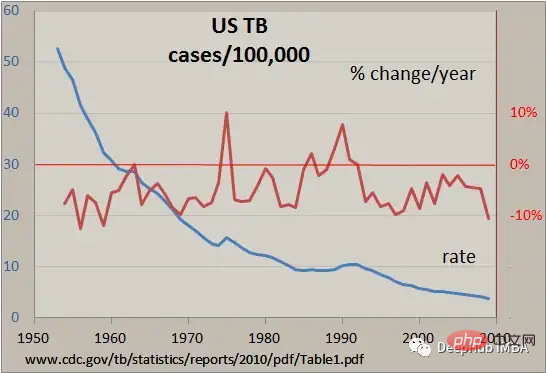PHP is a popular server-side scripting language that is popular because it is easy to learn and use. In PHP programming, mastering and understanding different data types is crucial to writing effective PHP programs.
This article will introduce the data types in PHP, including scalar, composite, special and NULL. Understanding these data types and how they are used will help developers better design and implement PHP applications.
Scalar data type
The scalar data type is the most basic data type in PHP, which represents a value with only one numerical value. These data types include:
- Integer type: represents an integer number. PHP supports different types of integers, including signed and unsigned. For example:
$x = 2020; // 整型 $y = -23; // 带符号整型 $z = 0654; // 八进制整型 $a = 0xA24; // 十六进制整型
- Floating point type: represents a number with a decimal part. For example:
$x = 3.1415926; // 浮点型 $y = 2.1e6; // 科学计数法表示的浮点型
- Boolean type: represents true or false. In PHP, Boolean values can be TRUE or FALSE. For example:
$x = true; // 布尔型true $y = false; // 布尔型false
- String: represents a series of character values. For example:
$x = "Hello World!"; // 字符串 $y = 'Hello World!'; // 字符串
Composite data type
The composite data type is the second data type in PHP, which represents values that can contain different types of values. These data types include:
- Array: Represents an ordered collection of values. Arrays can contain values of different data types and can be accessed through key-value pairs. For example:
$x = array("apple", "banana", "orange"); // 索引数组
$y = array("apple" => 2.10, "banana" => 1.25, "orange" => 1.50); // 关联数组- Object: represents the value of a custom data type. An object refers to an instance of a class and can contain properties and methods. For example:
class Car {
public $color;
public function setColor($value) {
$this->color = $value;
}
}
$x = new Car(); // 创建一个Car对象
$x->setColor("red"); // 设置对象的颜色属性为redSpecial data type
Special data type is the third data type in PHP, which represents special values. These data types include:
- Resource: Represents a reference to an external resource, such as a database connection or an open file. Resources are important data types used when performing I/O operations in PHP. For example:
$myfile = fopen("example.txt", "r"); // 打开example.txt文件- NULL: Indicates no value or no value set. For example:
$x = null; // NULL值
Using data types
The data types in PHP are widely used in programming. There are a few key points to note when using these data types:
- PHP is a dynamically typed language, and variables have their data types automatically defined the first time they are used. For example, when the variable $x is assigned an integer number, it is recognized as an integer data type. If you assign another value to $x, such as a string, then $x will become of type string.
- PHP provides different operators and functions to handle data types. These operators and functions apply to a specific data type. For example, the strlen() function is used to get the length of a string, while the sort() function is used to sort an array.
- It is recommended to specify the data type when declaring the variable. This allows for more efficient handling and maintenance of variables during programming.
As a developer, it is very important to understand and master data types when writing PHP programs. By understanding and using different data types, you can create more efficient and robust applications.
The above is the detailed content of Getting Started with PHP: Data Types. For more information, please follow other related articles on the PHP Chinese website!
 dint是什么数据类型Sep 05, 2022 am 11:05 AM
dint是什么数据类型Sep 05, 2022 am 11:05 AMdint是带符号位的32位整数类型;dint的表示方法及范围是“L#-2147483648~L#+2147483647”,定义为双整数或长整数,字节是电脑里的数据量单位,在计算机中,数据只用0和1这种表现形式。
 Python时间序列数据操作的常用方法总结Apr 24, 2023 pm 10:22 PM
Python时间序列数据操作的常用方法总结Apr 24, 2023 pm 10:22 PM时间序列数据是一种在一段时间内收集的数据类型,它通常用于金融、经济学和气象学等领域,经常通过分析来了解随着时间的推移的趋势和模式Pandas是Python中一个强大且流行的数据操作库,特别适合处理时间序列数据。它提供了一系列工具和函数可以轻松加载、操作和分析时间序列数据。在本文中,我们介绍时间序列数据的索引和切片、重新采样和滚动窗口计算以及其他有用的常见操作,这些都是使用Pandas操作时间序列数据的关键技术。数据类型Python在Python中,没有专门用于表示日期的内置数据类型。一般情况下都
 mysql性别用什么类型Jun 13, 2023 am 11:33 AM
mysql性别用什么类型Jun 13, 2023 am 11:33 AMMySQL性别采用多种数据类型来表示性别字段,例如CHAR、ENUM等,最终采用哪种类型,取决于实际需求以及数据存储的大小和性能。
 java的数据类型有哪些Jan 30, 2024 pm 03:23 PM
java的数据类型有哪些Jan 30, 2024 pm 03:23 PMjava数据类型:1、整型;2、浮点型;3、字符型;4、布尔型;5、其他数据类型;6、引用类型;7、原始类型与封装类;8、自动装箱与拆箱;9、可变参数;10、注解;11、枚举;12、原始类型和引用类型的选择。Java是一种强类型语言,因此每种数据都有其固定类型。
 decimal是什么类型Mar 18, 2021 pm 04:03 PM
decimal是什么类型Mar 18, 2021 pm 04:03 PMdecimal是MySQL中存在的精准数据类型,语法格式“DECIMAL(M,D)”。其中,M是数字的最大数(精度),其范围为“1~65”,默认值是10;D是小数点右侧数字的数目(标度),其范围是“0~30”,但不得超过M。
 MySQL数据类型详解:你需要知道的知识点Jun 15, 2023 am 08:56 AM
MySQL数据类型详解:你需要知道的知识点Jun 15, 2023 am 08:56 AMMySQL是世界上最流行的关系型数据库管理系统之一,因其可靠性、高安全性、高扩展性以及相对低的成本而得到了广泛应用。MySQL的数据类型定义了各种数据类型的存储方式,是MySQL的重要组成部分。本文将详解MySQL的数据类型,以及在实际应用中需要注意的一些知识点。一、MySQL的数据类型分类MySQL的数据类型可以分为以下几类:整数类型:包括TINYINT、
 表中字段的数据类型有哪些Jan 19, 2021 am 10:18 AM
表中字段的数据类型有哪些Jan 19, 2021 am 10:18 AM表中字段的数据类型有:1、二进制类型,包括Binary、Varbinary、Image;2、字符串类型,包括CHAR、VARCHAR、TEXT等;3、Unicode数据类型,包括Nchar,Nvarchar和Ntext;4、日期和时间数据类型,包括DATE、TIME、YEAR等;5、数值数据类型,包括INT、FLOAT、BIGINT等;6、货币数据类型;7、特殊数据类型等等。
 mysql中银行卡号用什么类型Jun 14, 2023 pm 04:34 PM
mysql中银行卡号用什么类型Jun 14, 2023 pm 04:34 PMmysql中银行卡号用“varchar”字符串类型,因为银行卡的号码较长并且全是数字,为了方便存储,就统一存储为字符串类型。如果用“number”类型,会超出“int”类型的最大值范围,必须用“bigInteger”存储,而它不利于数据的正常转换。


Hot AI Tools

Undresser.AI Undress
AI-powered app for creating realistic nude photos

AI Clothes Remover
Online AI tool for removing clothes from photos.

Undress AI Tool
Undress images for free

Clothoff.io
AI clothes remover

AI Hentai Generator
Generate AI Hentai for free.

Hot Article

Hot Tools

EditPlus Chinese cracked version
Small size, syntax highlighting, does not support code prompt function

Dreamweaver CS6
Visual web development tools

WebStorm Mac version
Useful JavaScript development tools

SublimeText3 Mac version
God-level code editing software (SublimeText3)

DVWA
Damn Vulnerable Web App (DVWA) is a PHP/MySQL web application that is very vulnerable. Its main goals are to be an aid for security professionals to test their skills and tools in a legal environment, to help web developers better understand the process of securing web applications, and to help teachers/students teach/learn in a classroom environment Web application security. The goal of DVWA is to practice some of the most common web vulnerabilities through a simple and straightforward interface, with varying degrees of difficulty. Please note that this software






